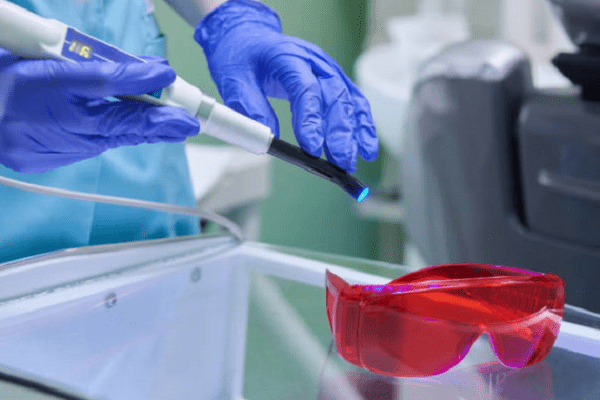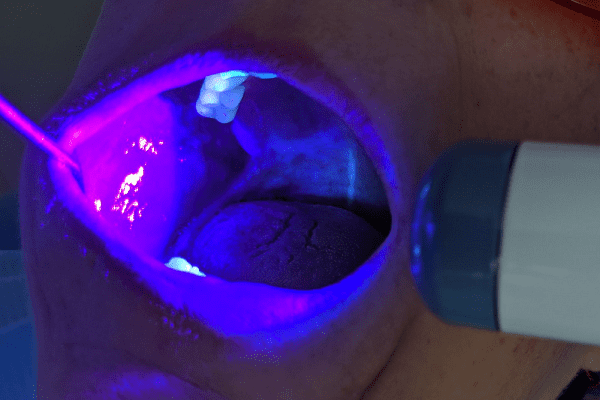Medical procedures >>>> What does oral cancer look like - to identify cancer in the mouth beforehand?
What does oral cancer look like - to identify cancer in the mouth beforehand?

Oral cancer is not as rare as previously thought. But patients do not pay enough attention to this problem in advance, and forms of cancer in the oral cavity are visually detected at a time when it is too late to talk about prolonging the patient's life for a significant period. As a rule, within a year from the moment of detection of cancer in the oral cavity and, in spite of oncology, a person loses his life, and only in extremely rare cases, against the background of oncological operations, overcomes the five-year milestone.
It is almost never possible to detect this disease, unless there is a task of compulsory diagnosis for the detection of cancer in the oral cavity. For this reason, early diagnosis of oral cancer (cheek, tongue, oral mucosa and oropharynx) becomes a practical necessity when visiting a dentist. But what opportunities exist today for a patient who wants to undergo an early diagnosis of the condition of the oral cavity to detect the precursors of cancer?
How to detect cancer in the oral cavity beforehand? For these purposes, there is a very simple test (painless and short-term), which does not require stress on the part of the patient, which makes it possible to detect cells - precursors of cancer development in the thickness of the oral mucosa - the ViziLite Plus test. The test can be performed by both a dentist and an ENT doctor.

Early diagnosis of oral cancer - the ViziLite Plus test - is carried out within 5-10 minutes:
- The patient is asked to rinse the oral cavity with 1% acetic acid solution (the required solution is included in the individual ViziLite Plus cancer screening kit) for 30-60 seconds. The patient is asked not to swallow temporarily while the mucous membrane stains.
- The oral mucosa (including the cheeks, inner side of the lip, tongue, palate, sublingual region and other presumably possible areas for the placement of cancer markers in the oral cavity) is treated with a blue metachromatic dye - 0.5% solution of the substance (the substance is based on toluidine blue dye).
- The doctor puts on special glasses with a light-sensitive filter and, illuminating with a flashlight, examines, examines the mucous membrane where it is necessary to notice problem foci. Such foci become whitish in the light of chemiluminescent illumination (short-wave light flux penetrating deep into the mucous, submucous layers and up to the basement membrane). Dried with a solution of acetic acid, cancer markers - atypical cells - refract short-wavelength light and reflect it - glow (glow fluorescently). The doctor marks the glowing areas with a blue marker.
- The patient is asked to once again rinse the oral cavity with 1% acetic acid solution to wash off the metachromatic dye, and the places marked with a marker will allow the doctor to take biopsy samples for further oncological examination, but already a serious histological examination of specific atypical cells identified.

Not only oncological screening of the oral cavity during a visit to the dentist's office and conducting tests can reveal the prerequisites for the occurrence of cancer in the oral cavity. There are several other options for self-examination of the oral cavity at home.
What does oral cancer look like?
Everyone has long known that aggressive cancer cells are not so much dangerous because of their presence in the thickness of healthy tissues, but because they are able to scatter such dangerous cellular structures throughout the body, which they successfully do if the cancer reaches the stage of metastasis. Such a scatter of cells, cancer foci are carried out by using the lymphatic system, so that one of the most important signals that the lymphatic system can give about the impending seeding of the body are enlarged lymph nodes, which are found in abundance just in the region of the head and neck - these are the main accumulators of infection, which the lymphatic system (read - the immune system,) tries to localize and stop. Inflamed and painful lymph nodes in the neck are a very important sign of the presence of already formed foci of cancer cells in the body.
A close examination of the state of the oral mucosa and tongue can also successfully tell about an impending disease. So whitening (lightening) of the mucous membrane in unusual places or its redness, darkening signal the presence of a serious problem in the thickness of the tissues of the mucous or submucous layer of the oral cavity (the inner part of the lips, the inner part of the cheek, the sublingual areas of the mucous membrane, the tongue itself with a changed color, especially if it is the change does not affect the entire surface of the tongue, but only its parts).
A very important and dangerous symptom of a cancerous formation developing or already existing in the thickness of the oral mucosa is the coarsening of the mucosa even in small (dotted areas). The formation of hard plaque on the tongue, rough areas on the surface of the tongue, its lateral surfaces, on the inner surface of the tongue.
Tongue cancer often develops in areas that are close to the root of the tongue (from the inside or outside), and it is in such difficult places that self-diagnosis should be performed - these are the most common areas of cancer development in the oral cavity.
Frequent minor symptoms of oral cancer are burning, tingling, itching, a feeling of tightness of the mucous membrane. Significant symptoms are long-term non-healing wounds, ulcers, abrasions, inflammation.
Where do oral cancers come from? The human oral cavity is one of those areas of the human body where tissue injuries can most often occur. Involuntary biting of the cheek or tongue, lips, trauma of hard and excessively hot food on the mucous surface, trauma to the mucous membrane by teeth as a result of improper bite (so-called "traumatic", trauma to the mucous membrane by the bones of fish, poultry during careless eating, keeping a burning cigarette in the mouth in this way, what happens a microburn of the mucous membrane of the mouth or lips).
All these factors can cause degeneration (carcinogenesis) of the cells of the mucous membrane lining the oral cavity. Especially often, regular injuries become prerequisites for the development of cancer in the oral cavity: rubbing with sharp edges of the teeth on the inner surface of the lips and cheeks, the lateral surfaces of the tongue, regularly biting the cheek or the inner side of the lip, regular microburns of the oral mucosa during smoking, when taking hot meals and drinks, as well as when taking alcohol-containing liquids with a high concentration of alcohol - more than 45%. Rinsing with alcohol solutions and other active disinfectants of the oral cavity is possible without consequences, only if these solutions have a specially established concentration of the disinfectant, which allows it to be used for intraoral rinses, lotions, applications and other manipulations in the oral cavity, including cauterization of the mucous membrane to coagulate blood in the area wound, incision, puncture or other medical manipulation.
For example, the aqueous or alcoholic solution of iodine with which we are accustomed to treating the surface of the skin is not suitable for lubricating wounds on the mucous membrane (for this there are specially created products with a harmless concentration (even with a burning effect).
Injuries to the oral mucosa can be caused by the abuse of food preservatives together with brine or the use of brines to relieve hangover. It should be remembered that the concentrations of acetic acid that are used for long-term preservation and those concentrations of vinegar that are added to food (salads, marinades, meat, fish or fish dishes) differ in the concentrations of acetic acid.
Self-diagnosis of the oral cavity is carried out by careful examination and palpation of the state of the mucous membrane. Redness of the back of the throat for no apparent reason and the presence of symptoms of a viral, bacterial or fungal infection. Sore throat at rest or at moments of swallowing of an unclear cause may indicate the presence in the oral cavity (in particular in the mucous layer lining the back of the throat) about serious problems. Often such pain can appear as a result of the development of a pharyngeal abscess or herpes infection, but they can also speak of a deadly condition of the pharyngeal mucosa (throat).
This attentiveness to one's own health allows for the prevention or detection of cancers or their precursors at very early stages. Such self-diagnosis of the oral cavity should be carried out regularly, since only a very attentive attitude to the smallest changes in health in the oral cavity allows, when visiting the dentist, to draw the doctor's attention to suspicious symptoms and to identify in time cancer problems or their prerequisites for successful treatment and prolonging one's own life for a long time.

Read

Read


























